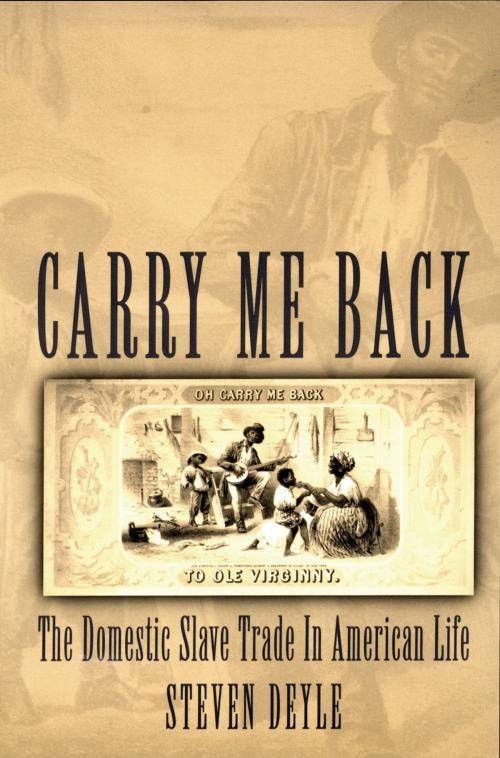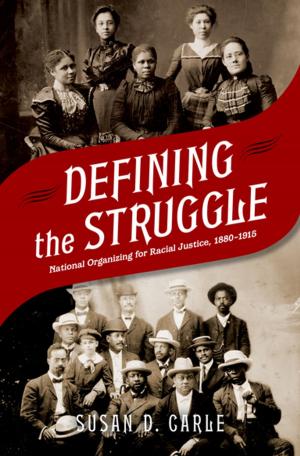Carry Me Back
The Domestic Slave Trade in American Life
Nonfiction, History, Americas, United States, Colonial Period (1600-1775), Social & Cultural Studies, Social Science, Cultural Studies, African-American Studies, 19th Century| Author: | Steven Deyle | ISBN: | 9780190294960 |
| Publisher: | Oxford University Press | Publication: | August 31, 2006 |
| Imprint: | Oxford University Press | Language: | English |
| Author: | Steven Deyle |
| ISBN: | 9780190294960 |
| Publisher: | Oxford University Press |
| Publication: | August 31, 2006 |
| Imprint: | Oxford University Press |
| Language: | English |
Originating with the birth of the nation itself, in many respects, the story of the domestic slave trade is also the story of the early United States. While an external traffic in slaves had always been present, following the American Revolution this was replaced by a far more vibrant internal trade. Most importantly, an interregional commerce in slaves developed that turned human property into one of the most valuable forms of investment in the country, second only to land. In fact, this form of property became so valuable that when threatened with its ultimate extinction in 1860, southern slave owners believed they had little alternative but to leave the Union. Therefore, while the interregional trade produced great wealth for many people, and the nation, it also helped to tear the country apart. The domestic slave trade likewise played a fundamental role in antebellum American society. Led by professional traders, who greatly resembled northern entrepreneurs, this traffic was a central component in the market revolution of the early nineteenth century. In addition, the development of an extensive local trade meant that the domestic trade, in all its configurations, was a prominent feature in southern life. Yet, this indispensable part of the slave system also raised many troubling questions. For those outside the South, it affected their impression of both the region and the new nation. For slaveholders, it proved to be the most difficult part of their institution to defend. And for those who found themselves commodities in this trade, it was something that needed to be resisted at all costs. Carry Me Back restores the domestic slave trade to the prominent place that it deserves in early American history, exposing the many complexities of southern slavery and antebellum American life.
Originating with the birth of the nation itself, in many respects, the story of the domestic slave trade is also the story of the early United States. While an external traffic in slaves had always been present, following the American Revolution this was replaced by a far more vibrant internal trade. Most importantly, an interregional commerce in slaves developed that turned human property into one of the most valuable forms of investment in the country, second only to land. In fact, this form of property became so valuable that when threatened with its ultimate extinction in 1860, southern slave owners believed they had little alternative but to leave the Union. Therefore, while the interregional trade produced great wealth for many people, and the nation, it also helped to tear the country apart. The domestic slave trade likewise played a fundamental role in antebellum American society. Led by professional traders, who greatly resembled northern entrepreneurs, this traffic was a central component in the market revolution of the early nineteenth century. In addition, the development of an extensive local trade meant that the domestic trade, in all its configurations, was a prominent feature in southern life. Yet, this indispensable part of the slave system also raised many troubling questions. For those outside the South, it affected their impression of both the region and the new nation. For slaveholders, it proved to be the most difficult part of their institution to defend. And for those who found themselves commodities in this trade, it was something that needed to be resisted at all costs. Carry Me Back restores the domestic slave trade to the prominent place that it deserves in early American history, exposing the many complexities of southern slavery and antebellum American life.















